-
 Bitcoin
Bitcoin $83,458.2141
-2.67% -
 Ethereum
Ethereum $1,573.6456
-4.30% -
 Tether USDt
Tether USDt $0.9999
0.01% -
 XRP
XRP $2.0723
-3.70% -
 BNB
BNB $581.4005
-1.36% -
 Solana
Solana $125.3253
-5.03% -
 USDC
USDC $0.9999
0.01% -
 TRON
TRON $0.2521
-0.43% -
 Dogecoin
Dogecoin $0.1540
-4.20% -
 Cardano
Cardano $0.6060
-5.85% -
 UNUS SED LEO
UNUS SED LEO $9.3707
-0.67% -
 Chainlink
Chainlink $12.2460
-4.06% -
 Avalanche
Avalanche $18.8097
-5.97% -
 Stellar
Stellar $0.2350
-2.48% -
 Toncoin
Toncoin $2.8686
-1.83% -
 Shiba Inu
Shiba Inu $0.0...01164
-2.94% -
 Sui
Sui $2.0816
-5.70% -
 Hedera
Hedera $0.1573
-6.20% -
 Bitcoin Cash
Bitcoin Cash $320.5595
-3.74% -
 Litecoin
Litecoin $75.7877
-3.38% -
 Polkadot
Polkadot $3.5343
-4.17% -
 Dai
Dai $1.0000
0.02% -
 Bitget Token
Bitget Token $4.2107
-2.77% -
 Hyperliquid
Hyperliquid $14.8217
-8.30% -
 Ethena USDe
Ethena USDe $0.9991
0.01% -
 Pi
Pi $0.6083
-18.46% -
 Monero
Monero $218.6656
2.90% -
 Uniswap
Uniswap $5.1744
-4.43% -
 OKB
OKB $52.3741
0.05% -
 Pepe
Pepe $0.0...07062
-5.76%
Where is Binance's headquarters?
Binance's elusive headquarters, shifting across multiple jurisdictions, fuels regulatory scrutiny and user concerns about legal recourse and asset security, highlighting the challenges of governing a globally-distributed cryptocurrency exchange.
Feb 27, 2025 at 11:37 pm
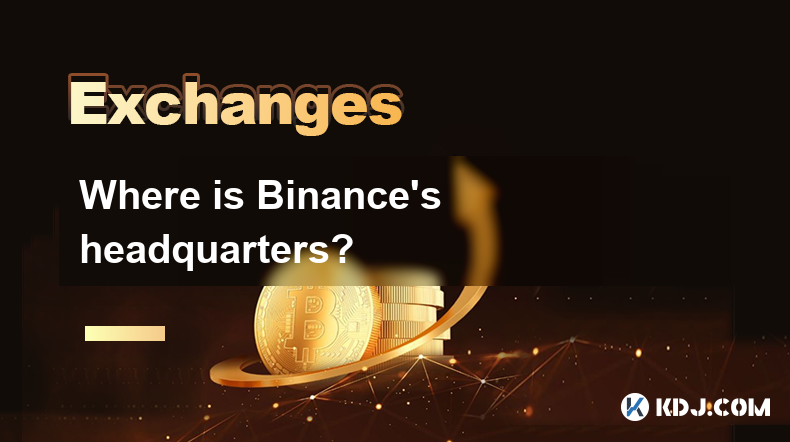
Where is Binance's Headquarters? Unraveling the Decentralized Nature of a Centralized Exchange
Key Points:
- Binance's officially declared headquarters location has shifted frequently and remains ambiguous, reflecting the challenges of regulating a global cryptocurrency exchange.
- The lack of a fixed headquarters contributes to ongoing regulatory scrutiny and legal battles worldwide.
- Binance's decentralized operational structure, while claiming to enhance security and resilience, complicates efforts to pinpoint a single governing entity.
- The ambiguous headquarters location raises concerns for users regarding jurisdiction, legal recourse, and asset security.
- Understanding Binance's operational structure and its implications for users requires a detailed examination of its global presence and regulatory interactions.
- The Elusive Headquarters: Binance, the world's largest cryptocurrency exchange by trading volume, doesn't have a clearly defined headquarters in the traditional sense. While the company has offices and registered entities in various jurisdictions globally, it consistently avoids declaring a single, definitive headquarters location. This deliberate ambiguity has been a source of considerable controversy and regulatory challenges. The company's initial registration in China quickly became untenable due to China's increasingly stringent regulations on cryptocurrency. Subsequently, Binance claimed to be headquartered in various locations including Malta, the Cayman Islands, and most recently, Dubai. However, each of these claims has faced scrutiny, with regulatory bodies in those jurisdictions either denying any official recognition or expressing reservations about Binance's operations. This constant shifting of location raises questions about transparency and accountability, particularly concerning user funds and compliance with international anti-money laundering (AML) and know-your-customer (KYC) regulations. The lack of a fixed address complicates investigations into potential regulatory violations and makes it challenging for users to understand which jurisdiction's laws govern their interactions with the exchange. This ambiguity creates uncertainty about where users can seek legal recourse in case of disputes or security breaches. The lack of a clear headquarters adds to the complexity of enforcing regulatory standards and investigating potential illicit activities on the platform. This dynamic situation continuously evolves as Binance navigates the complex legal landscape of the global cryptocurrency market.
- The Decentralized Myth and Centralized Reality: Binance frequently emphasizes its "decentralized" nature. However, this description is misleading. While Binance utilizes blockchain technology for its core operations, the exchange itself is a centralized entity, meaning a small group of individuals ultimately controls its operations and user funds. The company’s structure is more accurately described as globally distributed rather than truly decentralized. It operates a network of offices and subsidiaries around the world, each with specific functions and responsibilities. This geographically dispersed structure allows Binance to adapt to changing regulatory environments and potentially circumvent restrictions in specific jurisdictions. However, this distributed model also makes it difficult to establish a single point of regulatory oversight and accountability. This complex structure is often cited by Binance as a means of improving security and resilience. The argument is that if one jurisdiction cracks down, operations can seamlessly continue elsewhere. However, critics argue that this decentralized structure makes it harder to track transactions, detect illicit activities, and protect users from fraud. The complexity of the structure makes it challenging for users to fully understand the legal and operational implications of using the platform.
- Regulatory Scrutiny and Legal Battles: The lack of a clearly defined headquarters has been a major factor in the ongoing regulatory battles faced by Binance. Regulatory authorities worldwide are struggling to establish jurisdiction over the exchange and enforce compliance with local laws. Multiple investigations are underway in various countries, focusing on issues such as money laundering, tax evasion, and securities violations. The absence of a fixed headquarters makes it difficult for these authorities to effectively serve legal notices, seize assets, or conduct thorough investigations. This leads to protracted legal battles, further undermining user confidence and the overall stability of the platform. The challenges in establishing clear legal jurisdiction highlight the complexities of regulating a global cryptocurrency exchange operating in a fragmented regulatory landscape. The evolving nature of cryptocurrency regulation and the constant adaptation of Binance's operational structure contribute to this ongoing tension between the exchange and regulatory bodies. This situation underscores the need for a more unified and globally coordinated approach to regulating the cryptocurrency industry.
- User Concerns and Asset Security: The ambiguity surrounding Binance's headquarters raises significant concerns for users regarding the security of their assets and their ability to seek legal redress in case of disputes or security breaches. If a dispute arises, it becomes unclear which jurisdiction's laws apply, which court has jurisdiction, and which regulatory body is responsible for protecting user interests. This lack of clarity can leave users vulnerable to exploitation and without effective recourse. The absence of a clearly defined headquarters also raises concerns about the enforceability of user protection measures and the ability of regulatory authorities to intervene in case of security breaches or financial irregularities. Users need clarity regarding where their funds are held, what security measures are in place, and what legal recourse is available in case of problems. The opaque nature of Binance's operational structure makes it challenging for users to assess the risks associated with using the platform. This ambiguity underscores the need for greater transparency and accountability from Binance and the importance of users being fully informed before entrusting their assets to the exchange.
- The Future of Binance's Headquarters and Regulatory Compliance: The future of Binance's headquarters remains uncertain. The company continues to navigate a complex and ever-evolving regulatory landscape. The exchange’s approach to regulatory compliance is a crucial factor in determining its long-term success and stability. Increased transparency and cooperation with regulatory authorities would likely enhance user trust and reduce the ongoing legal challenges. However, Binance’s strategy appears to be one of adaptability and circumvention rather than full compliance, which raises questions about its commitment to operating within established regulatory frameworks. The company's long-term prospects depend heavily on its ability to find a sustainable balance between its global ambitions and the demands of international regulatory bodies. The ongoing evolution of the cryptocurrency industry and the increasing sophistication of regulatory frameworks will continue to shape Binance's operational structure and its approach to establishing a more clearly defined legal presence.
FAQs:
Q: Where is Binance actually located?
A: Binance does not have a single, officially declared headquarters. It operates a network of offices and registered entities in various jurisdictions worldwide, but avoids designating a single location as its main headquarters. This creates ambiguity regarding its legal domicile and regulatory oversight.
Q: Why doesn't Binance have a fixed headquarters?
A: The lack of a fixed headquarters is a strategic decision likely driven by a desire to avoid stringent regulations in specific jurisdictions and to maintain operational flexibility in a rapidly evolving regulatory environment. This allows Binance to adapt to changing legal landscapes and potentially circumvent restrictions.
Q: Is this legal?
A: The legality of Binance's operational structure is a matter of ongoing debate and legal challenges in various jurisdictions. The ambiguity surrounding its headquarters raises concerns regarding regulatory compliance and the potential for violations of anti-money laundering (AML) and know-your-customer (KYC) regulations. The legal status is subject to interpretation and varies depending on the jurisdiction.
Q: What are the implications for users?
A: The ambiguity regarding Binance's headquarters raises significant concerns for users regarding the security of their assets and their ability to seek legal redress in case of disputes or security breaches. The lack of a clearly defined legal domicile can create difficulties in determining jurisdiction, enforcing user protection measures, and obtaining effective recourse in case of problems.
Q: What is the future of Binance's headquarters situation?
A: The future of Binance's headquarters remains uncertain. The company's strategy likely involves adapting to evolving regulations and maintaining operational flexibility. However, this approach may not be sustainable in the long term. Increased regulatory scrutiny and potential legal challenges will likely influence Binance's future decisions regarding its legal and operational structure.
Disclaimer:info@kdj.com
The information provided is not trading advice. kdj.com does not assume any responsibility for any investments made based on the information provided in this article. Cryptocurrencies are highly volatile and it is highly recommended that you invest with caution after thorough research!
If you believe that the content used on this website infringes your copyright, please contact us immediately (info@kdj.com) and we will delete it promptly.
- Bitcoin (BTC) Dips Alongside Stock Futures as Nvidia Corp. NVDA Shares Tumble
- 2025-04-16 13:15:13
- Bitcoin (BTC) Faces a Critical Test as Global Markets Remain Volatile and Macroeconomic Tensions Escalate
- 2025-04-16 13:15:13
- Bitcoin (BTC) has been moving between $80,00 and $85,00 for the fourth day as the uncertain market for the U.S.-China trade dispute continues.
- 2025-04-16 13:10:12
- MicroStrategy (Formerly ) Doubles Down on BTC After a Performance in Q1 2025
- 2025-04-16 13:10:12
- Real-world asset-focused coin MANTRA OM/USD Topped The Cryptocurrency Gainers List On Tuesday
- 2025-04-16 13:05:13
- Semler Scientific Files to Issue $500M in Securities Following $30M DOJ Settlement
- 2025-04-16 13:05:13
Related knowledge

How do I contact customer service on Binance to resolve issues?
Mar 16,2025 at 04:30am
Key Points:Binance's customer service is primarily self-service, relying heavily on its help center and FAQs.Direct contact methods are limited, with email support being the most common route for non-urgent issues.Urgent issues may require using the in-app support system, though response times can vary.Understanding Binance's support structure and utili...
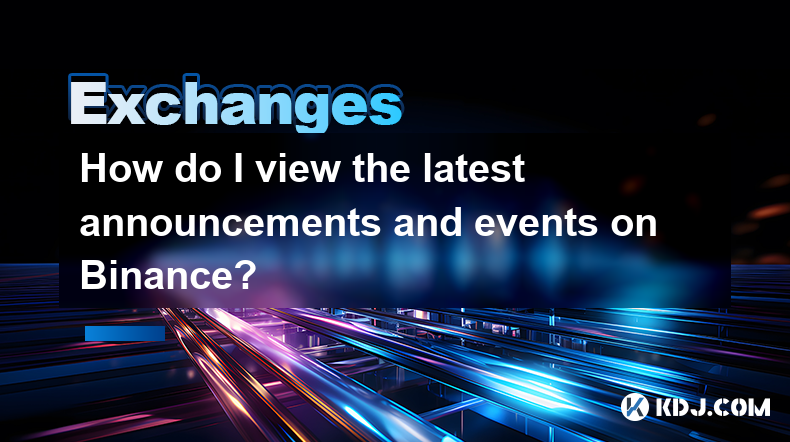
How do I view the latest announcements and events on Binance?
Mar 18,2025 at 10:18pm
Key Points:Binance utilizes multiple channels for disseminating announcements and events.The official Binance website is the primary source.Binance's social media platforms offer timely updates.Email subscriptions keep users informed about relevant announcements.Third-party aggregators can supplement official channels but require caution.How Do I View t...

How do I set up a subaccount on Binance?
Mar 14,2025 at 01:50pm
Key Points:Binance does not offer traditional "subaccounts" in the sense of separate accounts with independent logins under a master account.Instead, Binance offers features like user-defined labels for better portfolio management and API keys for automated trading. These provide functionality similar to subaccounts.Setting up these features involves na...
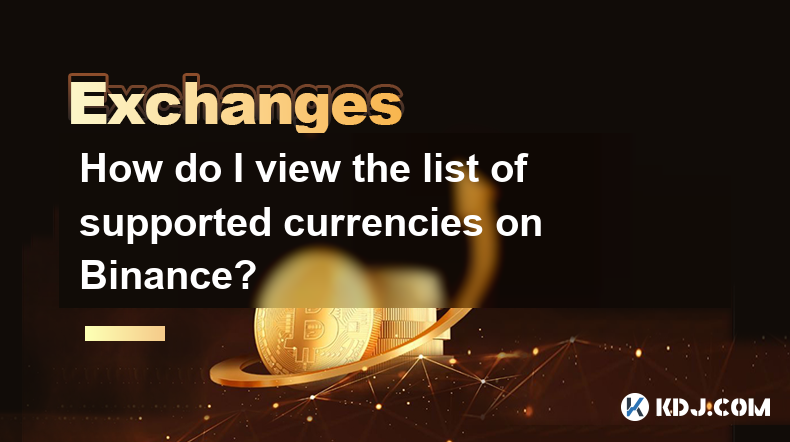
How do I view the list of supported currencies on Binance?
Mar 15,2025 at 05:35am
Key Points:Binance supports a vast and frequently updated list of cryptocurrencies. There's no single, static list.Finding supported currencies requires navigating Binance's website or app interfaces.Different sections of the exchange show different subsets of supported currencies (e.g., trading, staking, etc.).The availability of specific cryptocurrenc...
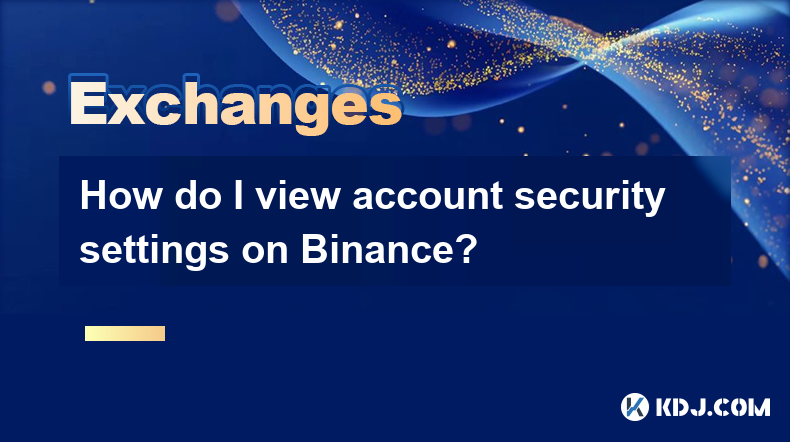
How do I view account security settings on Binance?
Mar 15,2025 at 08:40pm
Key Points:Binance's security settings are spread across multiple sections of your account. This article will guide you through each crucial area.Understanding and implementing these settings is paramount to protecting your cryptocurrency assets.We'll cover two-factor authentication (2FA), withdrawal whitelists, and other essential security features.Reg...
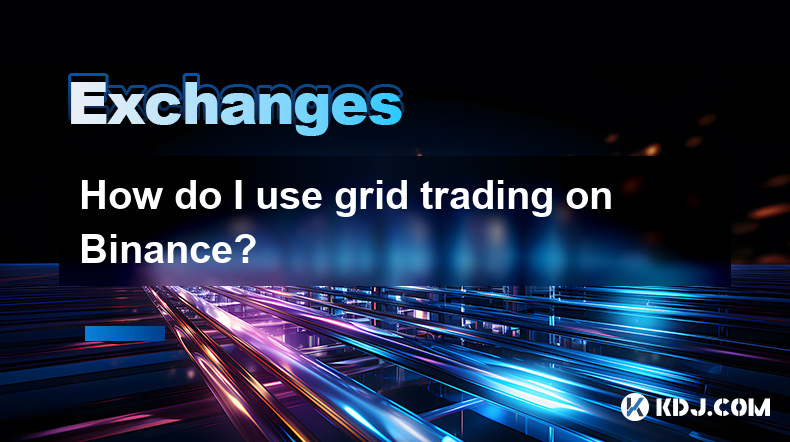
How do I use grid trading on Binance?
Mar 14,2025 at 04:25pm
Key Points:Grid trading on Binance involves automatically buying low and selling high within a defined price range.Binance offers a built-in grid trading bot, simplifying the process.Setting up a grid bot requires defining parameters like price range, grid quantity, and investment amount.Risk management is crucial, as losses are possible despite the aut...

How do I contact customer service on Binance to resolve issues?
Mar 16,2025 at 04:30am
Key Points:Binance's customer service is primarily self-service, relying heavily on its help center and FAQs.Direct contact methods are limited, with email support being the most common route for non-urgent issues.Urgent issues may require using the in-app support system, though response times can vary.Understanding Binance's support structure and utili...

How do I view the latest announcements and events on Binance?
Mar 18,2025 at 10:18pm
Key Points:Binance utilizes multiple channels for disseminating announcements and events.The official Binance website is the primary source.Binance's social media platforms offer timely updates.Email subscriptions keep users informed about relevant announcements.Third-party aggregators can supplement official channels but require caution.How Do I View t...

How do I set up a subaccount on Binance?
Mar 14,2025 at 01:50pm
Key Points:Binance does not offer traditional "subaccounts" in the sense of separate accounts with independent logins under a master account.Instead, Binance offers features like user-defined labels for better portfolio management and API keys for automated trading. These provide functionality similar to subaccounts.Setting up these features involves na...

How do I view the list of supported currencies on Binance?
Mar 15,2025 at 05:35am
Key Points:Binance supports a vast and frequently updated list of cryptocurrencies. There's no single, static list.Finding supported currencies requires navigating Binance's website or app interfaces.Different sections of the exchange show different subsets of supported currencies (e.g., trading, staking, etc.).The availability of specific cryptocurrenc...

How do I view account security settings on Binance?
Mar 15,2025 at 08:40pm
Key Points:Binance's security settings are spread across multiple sections of your account. This article will guide you through each crucial area.Understanding and implementing these settings is paramount to protecting your cryptocurrency assets.We'll cover two-factor authentication (2FA), withdrawal whitelists, and other essential security features.Reg...

How do I use grid trading on Binance?
Mar 14,2025 at 04:25pm
Key Points:Grid trading on Binance involves automatically buying low and selling high within a defined price range.Binance offers a built-in grid trading bot, simplifying the process.Setting up a grid bot requires defining parameters like price range, grid quantity, and investment amount.Risk management is crucial, as losses are possible despite the aut...
See all articles























































































